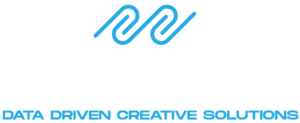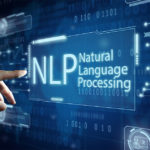NLG or natural language generation is a field of artificial intelligence research and development that deals with the use of computer systems to automatically produce natural language, mainly written text.
The first goal is to generate comprehensible results without human intervention, for example to create news from data sources or company reports. Another goal, which overlaps with machine translation and computational creativity, is the ability to engage in a dialogue with a person who would otherwise be unable to communicate verbally.
What is NLG and how does it work?
Natural language generation (NLG) are techniques that can generate natural language text from some input data. For example, a computer program can take geographic coordinates and use them to generate a location description such as “100 Main St, Boston”.
This is an emerging area of Artificial Intelligence that focuses on automatic writing using computers and has many applications.
NLG technologies can include many different tools, such as statistical or rule-based natural language generators, parsers, semantic analysis tools, query response systems and other software applications.
What are the main applications of NLG?
Many people today are looking for a way to be more productive with their time and effort. This is where NLG comes into play. NLG or natural language generation is the process by which a computer automatically generates text through the input and analysis of data containing both explicit information and latent variables. In other words, NLG allows computers to understand human language and then produce text based on what humans say.
NLG also has many advantages, such as reducing human error or ambiguity, which helps companies communicate better with their customers and saves companies costs by reducing the need for manual work.
It has many applications, such as creating content for websites or generating subtitles for videos in different languages. The NLG will have more uses as time goes on.

What other applications does NLG have? Some of them are:
- Generating descriptions and search engine friendly content for the web pages you create.
- Creating subtitles for slide presentations.
- Generating press articles that are automatically updated with breaking news.
- Generating personalised email responses and customer service interactions.
- Adding generic content to existing websites.
What are the benefits of NLG?
With NLG we are able to generate text using natural language programming. NLG replaces the need to manually write content and creates it dynamically. The software applies different algorithms to create various pieces of writing, such as magazine posts, social media posts, press releases, etc.
One of the advantages of NLG is that it is able to target audiences with specific interests or concerns. This eliminates any problem of the writer projecting their own biases onto the writing and allows the reader to receive accurate information without being swayed by their personal opinion.
As mentioned above, another great advantage of NLG is that it can help automate repetitive tasks in a work environment. For companies, this can save time and money, as well as reduce stress for employees, who now have more time to spend on less automated tasks.

In short, how can NLG help you?
NL is a highly innovative tool with many advantages that saves costs and effort, allowing workers to focus on other tasks. It will continue to grow as more powerful tools are created for it and it is important to follow its evolution closely.
If you are interested in taking advantage of this technology but are not sure where to start, contact us today – we can help you get started in a way that is tailored specifically to your needs!





